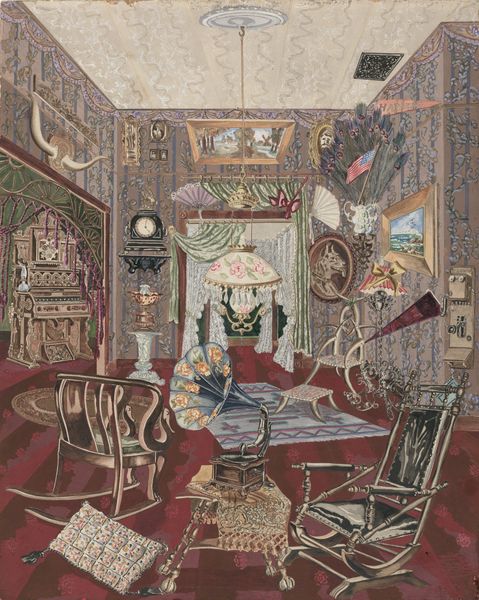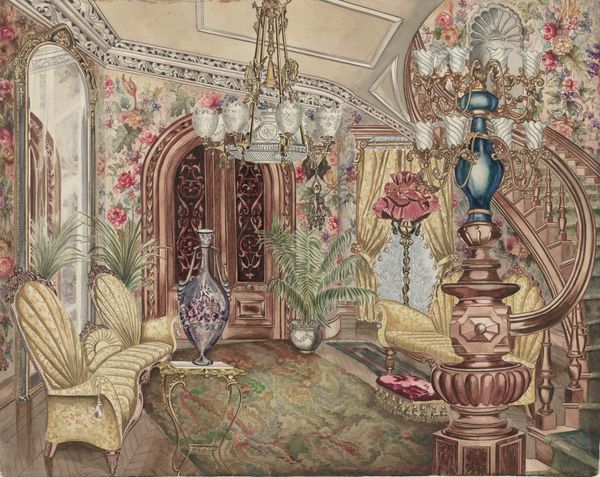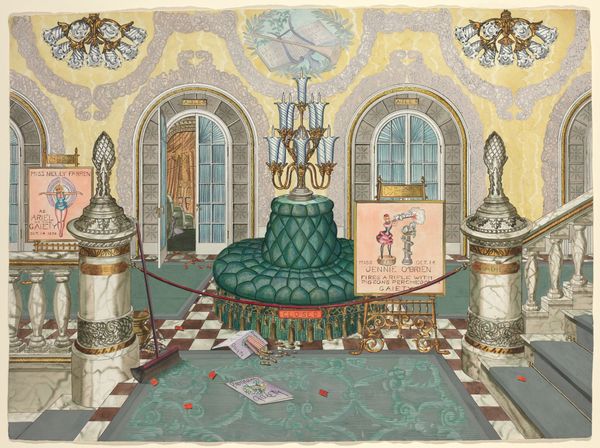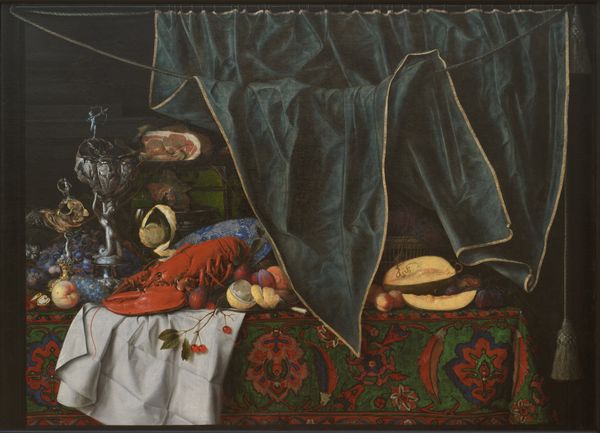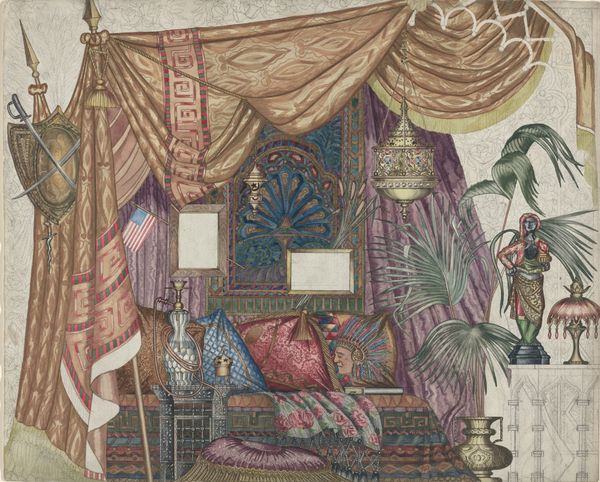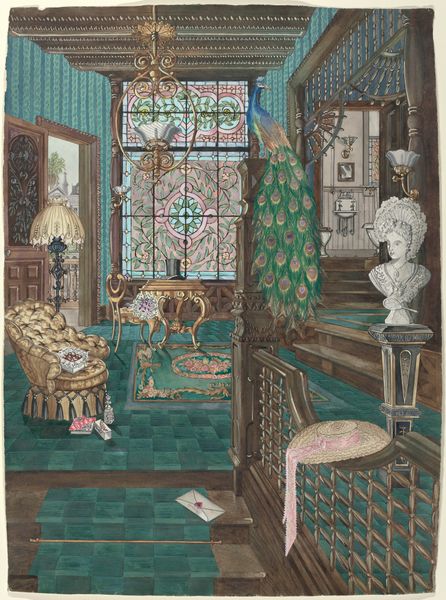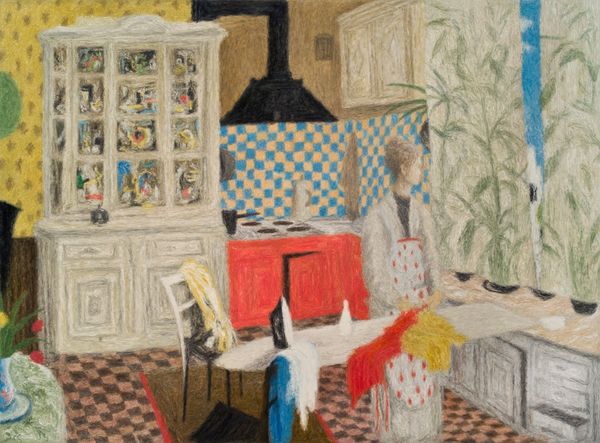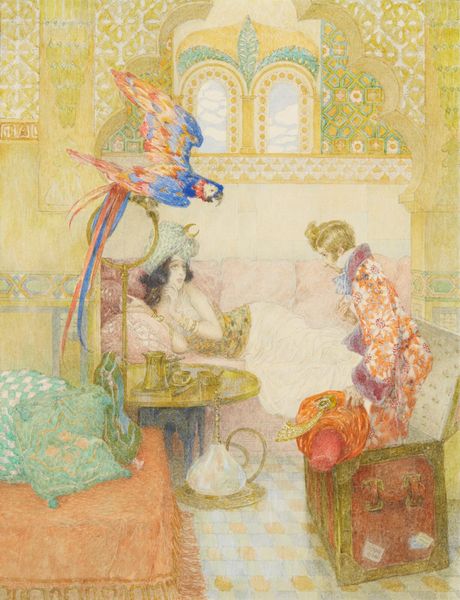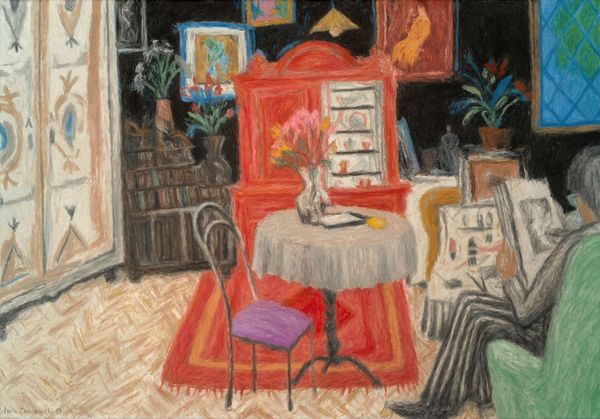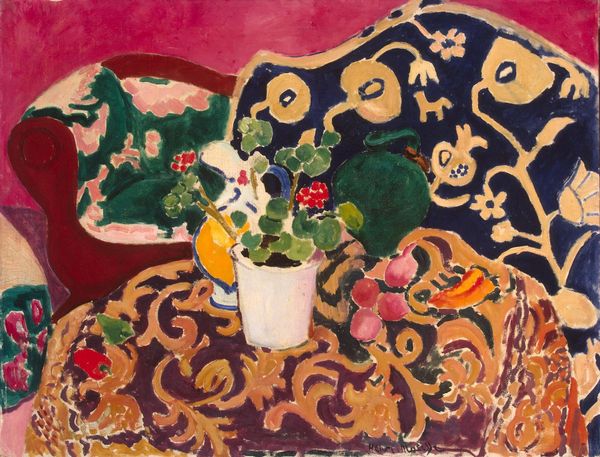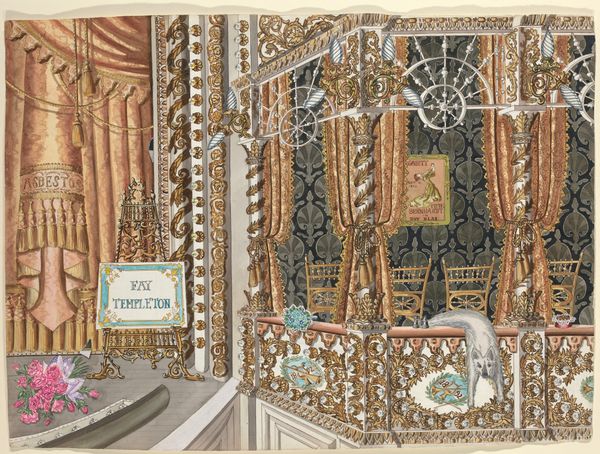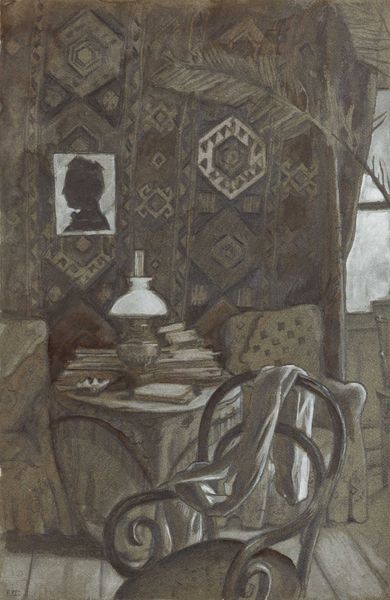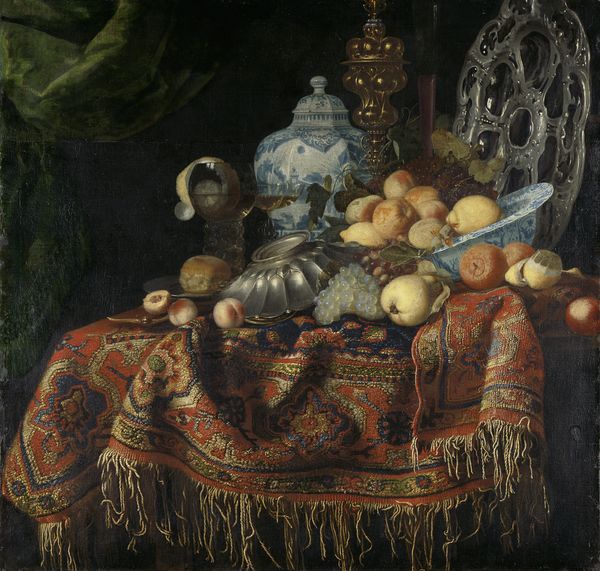
drawing, mixed-media, painting, watercolor
#
drawing
#
mixed-media
#
painting
#
folk art
#
watercolor
#
naive art
#
mixed media
#
watercolor
Dimensions: overall: 48.7 x 56.6 cm (19 3/16 x 22 5/16 in.)
Copyright: National Gallery of Art: CC0 1.0
Curator: Well, here we have "Bedroom, 1882," a mixed media work created sometime between 1935 and 1942 by Perkins Harnly. What's your initial read of this image? Editor: It's overwhelmingly ornate, isn't it? All those layers of pattern, the fussy details...it creates a sense of claustrophobia, almost. I'm curious about all the different kinds of representation in one pictorial plane, that patterned wall looks especially contemporary! Curator: Harnly, associated with folk art traditions and what's now been termed "naive art," actually worked in the WPA's Federal Arts Project. I see this almost as a period room diorama, rendered in watercolor, drawing, and paint to evoke nostalgia. There is so much detail within this intimate, domestic setting. Editor: Yes, that's what grabs me! The floral motifs repeat endlessly: roses on the wallpaper, lamps, pitcher... roses often symbolize love, beauty, and secrecy, but here the repetition feels almost oppressive. Does it echo anxieties around traditional domestic roles, do you think? Curator: Certainly, these images reflected complex ideologies around the ideal home at the time. There is an invitation and imprisonment operating in the cultural imagination and it is on display in these artistic projects, this bedroom in particular, its style so determinedly out-of-date. The open letter, for instance. A coded narrative right there, as a symbolic substitute for touch in the absent lover trope, I'd wager. Editor: That's a wonderful point about the letter. It is a common, time-honored emblem. What fascinates me is the tension he establishes between visual comfort, all that heavy layering of luxurious textures, and underlying unease of excess and entrapment in the setting. Curator: And notice, how that entrapment doesn't exist for some generic feminine idea of interior life but as a coded reference to domestic and gender performance at mid-century. It reveals the tension around personal desire against the socio-political theater within these home spaces. Editor: Ultimately, this “Bedroom, 1882” offers a layered vision beyond its mere appearance. Curator: Agreed, by considering historical context, we realize how much this mixed-media creation speaks to cultural forces.
Comments
No comments
Be the first to comment and join the conversation on the ultimate creative platform.
